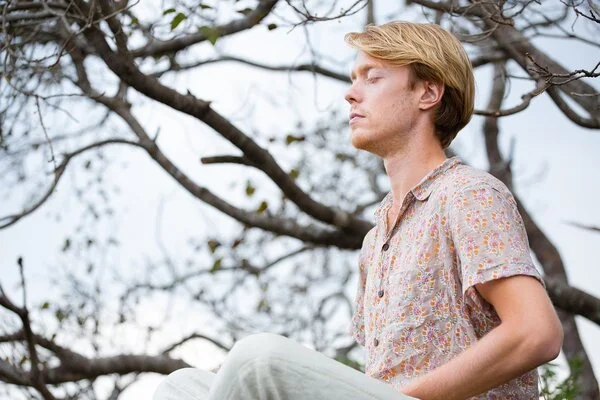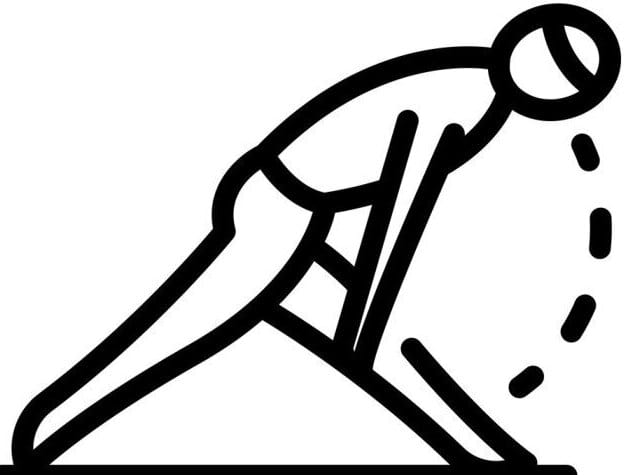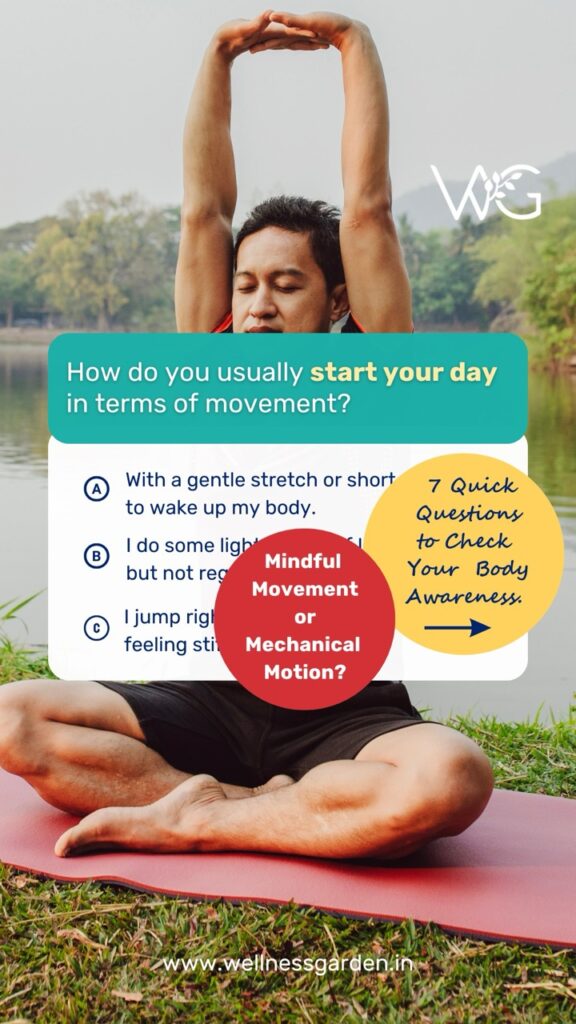Understanding Yogasana Benefits for Anxiety & Stress Relief
- Movement
- 3 mins
- March 4, 2023
- Dr. Prateek MH
- Stress, Yoga & Meditation
Do you have a persistent sense of tension in your body and a racing mind? Anxiety may be very bothersome. However, what if there had been a natural solution to reduce the discomfort and tension? Yoga might be your hidden weapon, according to recent studies. According to a study, practicing yogasana considerably improved the symptoms of anxiety. We’ll go into the particular yoga poses and practices in this article that may assist you manage your anxiety and develop inner calm.

Introduction
Stress, fear, anxiety: if we start counting all those instances in life when we experienced these emotions, we may just lose count! Anxiety about the result of board exams or the reaction of our parents to the report card, nervousness about the first date, or a job interview, we all would have lived through these moments. A little bit of fear is normal, in fact, just like salt in food, it is needed so that we remain disciplined, focused, and dynamic.
The problem starts when this fear becomes persistent and intimidating to start interfering with our everyday lives. Then it becomes an anxiety disorder, a state of excessive uneasiness, worry, or fear of the unknown, which needs to be treated, and this is where Yogasana benefits can help.
It is also good to know that yoga alone should not be considered as the only treatment option. It should complement proper medication after consultation with a doctor or specialist. The doctor would guide you on the condition better and help you understand the type of anxiety disorder you may have: Panic Disorder, Obsessive Compulsive Disorder, Post-Traumatic Stress Disorder, Social Anxiety Disorder, or Generalized Anxiety Disorder, to name a few.
Regular yoga practice/ yogasana benefits can help you stay calm and relaxed in daily life, and can also give you the strength to face events as they come without getting restless. Yoga practice ideally includes the complete package of asanas (body postures), pranayamas (breathing techniques), meditation, and the ancient yoga philosophy, all of which have helped several anxiety patients recover and face life with new positivity and strength.
Simple Yogasana / Asanas
Practicing some of the simple yogasana for stress relief can be helpful for some people. You do not need a class, special yoga clothes, or athletic wear to perform these poses. All you need is space, dedication, and the fearlessness to implement them. You can do these 5 asanas whenever you are feeling anxious, to help ground you back to the present.
- Shashankasana – Shashanka Pose of yogasana benefits helps to release tension in the back, neck, and shoulders which are the areas where most people hold a lot of their stress. This pose also helps to promote relaxation by encouraging steady conscious breathing, which is particularly great for anxiety sufferers due to its calming effect on the nervous system.
- Vrikshasana – The tree Poses of yogasana makes the body to handle the anxiety. By implementing basic standing balances, you promote concentration, focus, and awareness, to take your mind away from anxiety and place your attention on your physical self.
- Veerabhadrasana – If you are comfortable with standing leg balances and would like a pose that strengthens, lengthens, and challenges you, Veerabhadrasana is the way to go. This pose enhances your core strength and improves coordination, balance, and posture. It also stimulates your abdominal region, which helps to improve digestion. Proper digestion and overall gut health are imperative in the fight against anxiety, as recent studies have discovered a link between the two. Veerabhadrasana will also help to calm the mind by shifting your attention away from intrinsic thoughts and redirecting your thinking back to yourself.
- Sheershasana – Headstand is one of the best poses to practice of yogasana makes the body strong, especially during the most anxious times. It reverses the blood flow in your body, causing you to focus more attention on your breath, rather than your anxiety or discomfort. By focusing your awareness on your body’s place in space, you begin to evoke calmness and contentment. When we increase and stimulate blood flow to our head, one main benefit is the detoxification of our adrenals, which is also known to decrease depression.
- Sarala Pranayama – Breathing issues affect many people living with anxiety. In some cases, anxiety can be brought on by poor breathing habits, but more commonly anxiety creates poor breathing habits by constantly stimulating the autonomic nervous system, ultimately changing the way you breathe. To control your mind, you have to control your breath and, therefore, it is very important to learn proper breathing techniques of yogasana
How to do Yogasana?
Yogasana, a practice embracing the physical, mental, and spiritual dimensions, offers a holistic approach to alleviating anxiety and stress, enhancing health, fitness, and overall well-being. As you explore the steps of Shashankasana, Vrikshasana, Veerabhadrasana, and Sheershasana, simple yet effective, these poses are accessible to all, requiring only space, dedication, and an open heart to practice. Furthermore, the principle of Sarala Pranayama introduces you to the art of conscious breathing. By allowing your inhalations and exhalations to flow harmoniously, this practice isn’t confined by rules or restrictions; it can be woven seamlessly into your daily life, especially during moments of Yogasanas for stress relief.
Steps to perform Shashankasana
Begin on your hands and knees with your big toes touching. Your hands should be directly under your arms and your legs’ hips distance apart. Exhale as you bow forward allowing your torso to rest on or between your thighs with your forehead on the mat. Keeping your arms extended, press into your hands keeping your sit bones on your heels. Hold this pose for as long as you need to. When finished, slowly use your hands to walk your torso upright and sit back on your heels.
Steps to perform Vrikshasana
Standing tall with your feet hips distance apart, shift your weight to your right leg. Bend your left knee, and place the sole of your left foot into your inner right thigh or just below the knee, with your toes pointed towards the floor. Center your pelvis such that it is directly over your right foot. Press the sole of the left foot into your inner right thigh, while resisting with your outer right thigh. Place your hands into prayer with your thumbs at your heart center. Your gaze can be facing the ceiling or facing forward. Hold for 2-3 breaths, then repeat on the other side.
Principle of Sarala Pranayama

Breathing should always be slow, steady, and deep. Try to maintain breathing in such a way that the duration of exhalation should prolong the duration of inhalation. Try to inhale as deeply as possible and try to exhale as slowly as possible. Try to utilize all the 3 segments of respiration, i.e. abdomen, thorax, and clavicular area. This is known as ‘Sarala Pranayama’.
There are no rules or restrictions for this kind of pranayama. It can be practiced anytime and anywhere. Just maintain the erect posture of the spine, and try to practice the Sarala Pranayama for a few rounds during anxious times. Feel the power of your breath. It will relieve the anxiety.
You can practice these poses of yogasana daily or whenever you feel the need to relax and rejuvenate. By incorporating these yogasana into your routine you’ll find a bridge between body and mind, leading to shedding of the grip of anxiety to a place of calm.
If you’re interested in practicing the aforementioned yoga under our guidance, feel free to get in touch with us for personalized Yogasna benefits Consultations and more.
A Word From WG
Wellness Garden is your committed partner in seeking comprehensive natural and holistic therapies to address all your pain and wellness requirements. Our approach encompasses the entirety of your body, mind, and environment, integrating body, mind, and nutrition therapy and various other techniques.
Whether facing physical or mental health concerns, life hurdles, or simply aiming to enhance your overall well-being, we’re here to provide the support you need. Get in touch with us to explore the possibilities and embark on your journey towards holistic therapy and improved health.
- Table of Contents
- • Introduction
- • Steps for Perform
- • A Word From WG
Recent Posts
Join Our Newsletter
End note from WG Team
Dr. Prateek MH
Amruth Heritage Magazine
Take the next step in your wellness journey. Discover how our curated non-allopathic therapies can complement newfound knowledge at www.program.wellnessgarden.in or reach out for personalized guidance to our team at info@wellnessgarden.in.
Disclaimer: This information is provided for educational purposes and should not be construed as medical advice. Please consult with healthcare practitioners before undertaking any changes in wellness routines or adding new therapies.
Latest Blogs
Check out some of your blogs related to your interest.
- September 21, 2025
- Dr. Miuru Jayaweera
- 3 Mins
- September 6, 2025
- Dr. C. A. Ansar
- 3 Mins
- September 4, 2025
- Dr. Khyati Singh
- 3 Mins

- August 30, 2025
- Namrata Purohit
- 2 Mins





